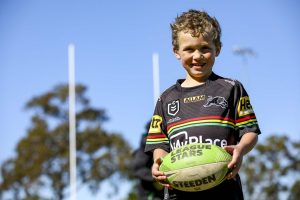A Local Bushwalker
While we are enjoying walking in our local area please consider the following article from the National Parks Association of NSW website: Bushwalking
“There are many different reasons why people head into natural areas to go bushwalking.
Maybe to escape the hustle and bustle of everyday city life, maybe to clear the mind, maybe to get fresh air and exercise, or simply appreciate the beauty of nature. Whatever the reasons for heading into the bush, going there brings a unique connection to it, and nothing is more heartbreaking than seeing natural areas trashed by current and previous visitors.
Natural areas in Australia are important habitats for native wildlife including vulnerable and endangered wildlife.
Having negligible impacts on natural areas is more than just carrying out the rubbish.
It extends to how much noise the group makes – maybe yelling at someone at the front of the group scared away a bird from its nest and young?- or even the smallest disturbance to rocks – perhaps that forced an insect out into an area where it is unprotected from predators.
Visitors to natural areas have a responsibility to help protect these areas from any degradation by following basic minimal impact bushwalking principles.
Leave No Trace Australia is an organisation dedicated to inspiring and promoting responsible use of the outdoors through research, partnerships and education. It’s a national non-profit group that runs workshops and courses on the subject of minimal impact bushwalking.
The Leave No Trace guidelines describe best practices for visiting natural areas. They consist of seven principles:
1. Plan ahead and prepare Bushwalking
2. Travel on durable surfaces – minimal impact walking for natural areas.
* Straying from the track damages native vegetation and soil, which can lead to erosion. Vegetation stabilises the soil with root structures and protects the soil layers. Vegetation loss and soil erosion alter pollination processes, nutrient cycling and potential knock-on impacts to other ecological processes. These impacts are particularly exaggerated in sensitive ecosystems. So regardless of whether the track is muddy or wet, stick to it.
3. Dispose of waste properly – leaving natural areas in pristine condition.
* Rubbish dumped in the bush can have serious impacts on native wildlife. Animals scavenging for food may shred plastic wrapping, spreading it further through the bush. Worse still, animals may ingest some pieces while scavenging for food with potentially lethal consequences.
* Remove all rubbish including fruit peel and cores. While most common fruits/vegetables will biodegrade, they will not do it overnight. Leftover fruit and vegetable matter in the bush will become an eyesore to other bushwalkers and potentially harm wildlife.
Feeding wild animals human food can make them reliant on human foods and less capable of hunting natural food. If animals start to associate humans with food sources, it can make them aggressive towards people. Some animals may become extremely sick if they eat human food since they are not used to it. In rare cases, fruit or vegetable waste may germinate resulting in an introduced weedy species in a natural area.
Likewise, do not put food waste into watercourses.
4. Leave what you find – interacting with the natural surroundings
* People visit natural areas for a range of reasons, but all seem to share the same desire to experience wild beauty and reconnect with something fundamentally natural. All bushwalkers want to be able to return again and again to these wilderness areas and experience them exactly unchanged and untouched. Think of natural areas as a museum to explore, look and learn from, and leave for others to see too. By leaving behind every element of nature just as they found it, bushwalkers can have minimal impact on the natural ecology of the system, and minimal disturbance to wildlife.
* Do not touch or remove any natural material. This includes flowers, feathers, rocks, plants, fossils, shells and so on. It also means not to move artefacts between sites in natural areas. Leave everything as it should be.
5. Minimize campfire impacts
6. Respect wildlife – have minimal impact on natural wildlife
* Bushwalkers that use natural areas must respect wildlife, and cause as little disturbance as possible. Give wildlife as much space as possible and do not interfere with them. Bushwalking
* Carry out all food scraps and do not feed wildlife. Bushwalking
* Walk calmly and quietly through the bush. Never touch or corner an animal for the sake of a photo. If you spot an animal, watch quietly and calmly, and take the experience home as a great memory.
* While dogs are wonderful companions in an urban context, consider carefully which natural areas are suitable. Many pet owners argue that because their pet won’t attack or harm any native wildlife, it should be allowed to access natural areas.
But it’s not just the danger of a pet attacking a native animal, the mere presence of a dog can scare birds away from breeding areas. Researchers found lower bird abundance and diversity in dog walking areas even when dogs were kept on leads.
7. Consider hosts and other visitors
For more information on these principles see npansw.org.au or lnt.org.au






